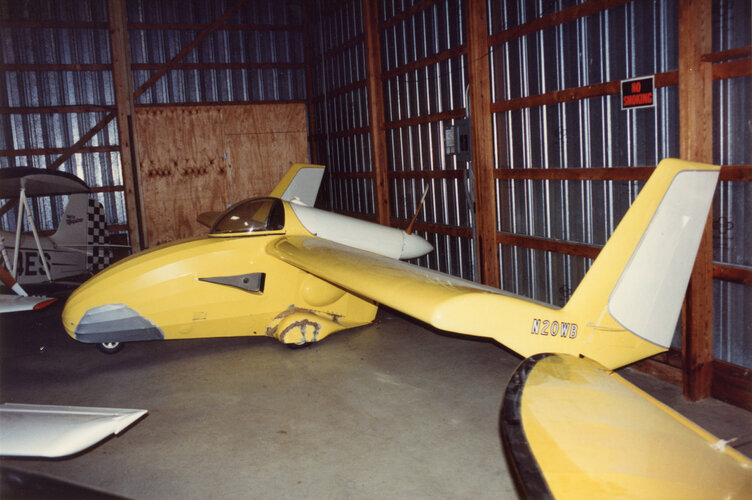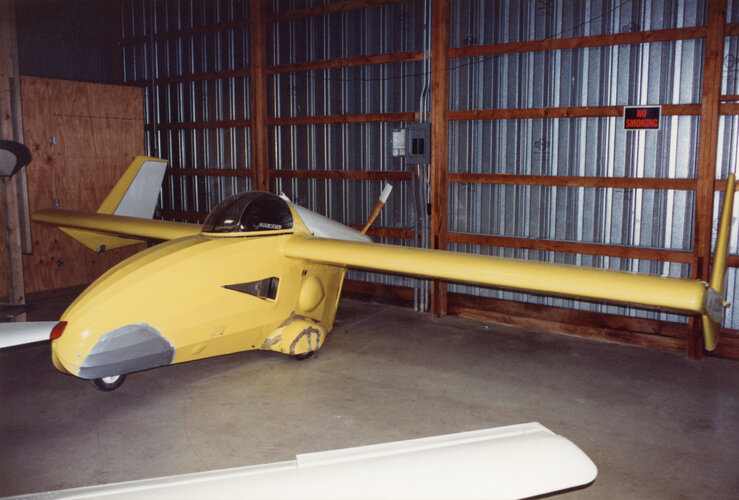- Joined
- 25 June 2009
- Messages
- 14,126
- Reaction score
- 4,287
Al Backstrom is known as the man behind the famous "Flying Plank" series of all-wing gliders. However, he also had several unbuilt designs. Here is a recap of known Backstrom types:
EPB-1 "Flying Plank" (1954)
Straight-wing tailless sailplane designed and built by Backstrom, helped by John Powell, Eric Craig and Phil Easley. Featured tip rudders. Built slightly heavier and with greater span than design specifications to keep wing loading down. Used for drag-reduction tests conducted at Mississippi State University. 1 prototype built [N66348].

EPB-1A "Flying Plank" (initially called "Minimidget") (1958)
Version sold as plans; retained the twin tip rudders of the prototype. Approximately 10 built [N1039C (c/n 1) N7834R, etc.], notably in Australia.

EPB-1B? "Twin Plank" (1958)
Two-seat side-by-side version of EPB-1A built in Australia by GlidAir.
EPB-1C "Flying Plank" (1965)
Model modified by Al Cleave, featuring a centrally-mounted fin and rudder assembly attached to cockpit rear, lengthened fuselage. At least 2 built [N19C, c/n 1] and N4859, c/n MCS-1].

EPB-1H "Flying Plank"
One EPB-1A modified with different airfoil; not successful, dismantled.
EPB-1 HR "Super Plank" (1965)
Improved version modified from EPB-1A, with single centrally-mounted fin, increased span [N1039C, c/n 1] and at least a second one.

EPB-2 "Flying Plank" (1959)
Unspecified variant built by Mr. Linder [N7634B, c/n 1].
"Super Plank" (1973)
Second example with overall refined design.

WPB-1 "Powered Plank" ("Flying Plank II") (1975)
Powered version with Kiekhaefer 40hp Aeromarine 440 engine, two-blade pusher propeller [N20WB, c/n 1].
Tubular fuselage, wooden wings, tandem wheel/outrigger undercarriage (later tricycle gear). Mostly built by Van White.

WPB-1 "Powered Plank" (circa 1976)
Planned modifications, not built.

"Bug Bomb 1" (Nov. 1974)
Unbuilt design.

"Smoothie" (Dec. 1974)
Unbuilt design.

"Seawing" (Dec. 1974)
Unbuilt design.

A FEW NOTES:
EPB-1 "Flying Plank" (1954)
Straight-wing tailless sailplane designed and built by Backstrom, helped by John Powell, Eric Craig and Phil Easley. Featured tip rudders. Built slightly heavier and with greater span than design specifications to keep wing loading down. Used for drag-reduction tests conducted at Mississippi State University. 1 prototype built [N66348].
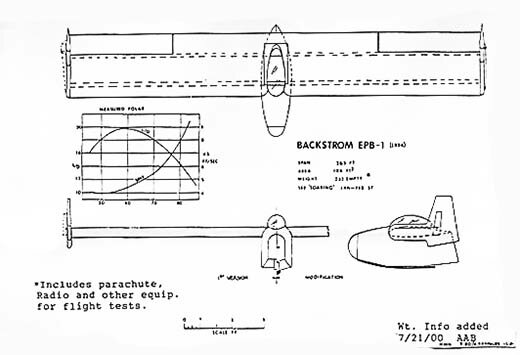
EPB-1A "Flying Plank" (initially called "Minimidget") (1958)
Version sold as plans; retained the twin tip rudders of the prototype. Approximately 10 built [N1039C (c/n 1) N7834R, etc.], notably in Australia.
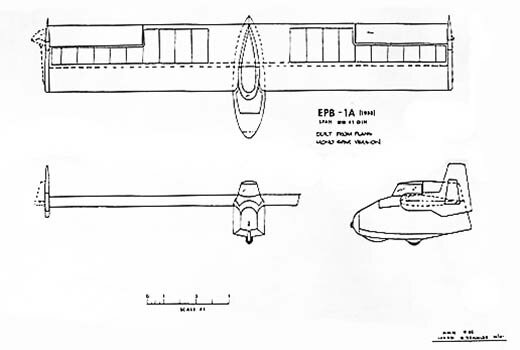
EPB-1B? "Twin Plank" (1958)
Two-seat side-by-side version of EPB-1A built in Australia by GlidAir.
EPB-1C "Flying Plank" (1965)
Model modified by Al Cleave, featuring a centrally-mounted fin and rudder assembly attached to cockpit rear, lengthened fuselage. At least 2 built [N19C, c/n 1] and N4859, c/n MCS-1].
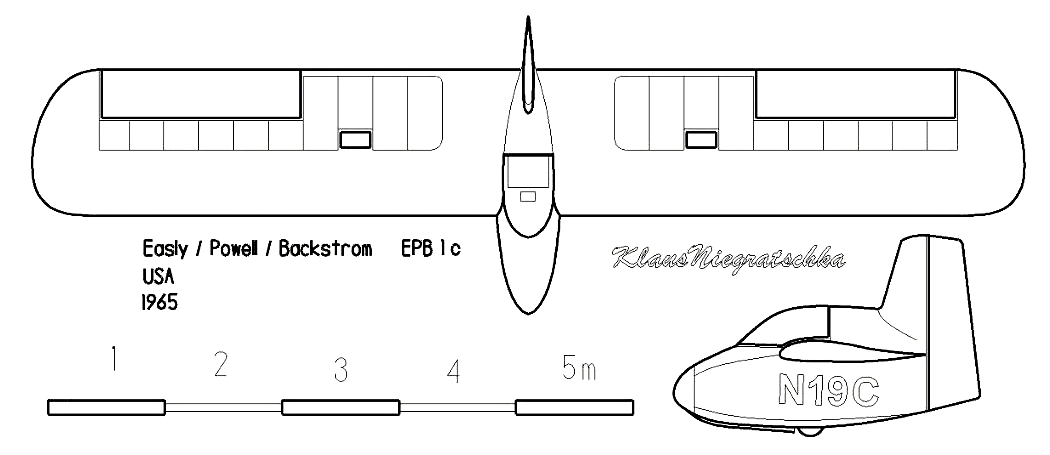
EPB-1H "Flying Plank"
One EPB-1A modified with different airfoil; not successful, dismantled.
EPB-1 HR "Super Plank" (1965)
Improved version modified from EPB-1A, with single centrally-mounted fin, increased span [N1039C, c/n 1] and at least a second one.
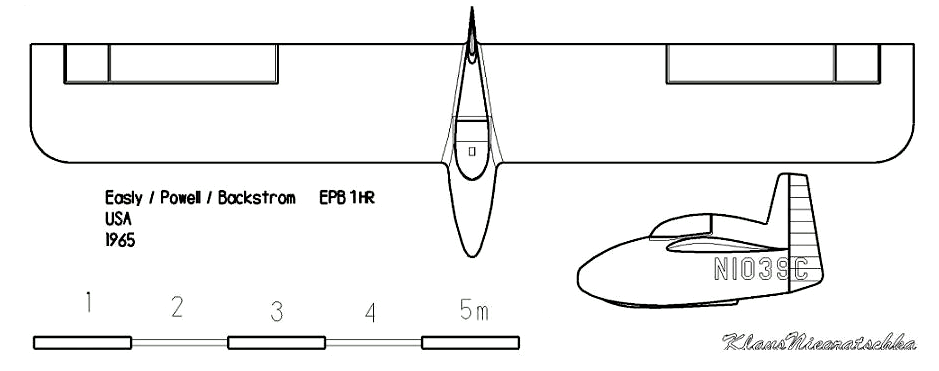
EPB-2 "Flying Plank" (1959)
Unspecified variant built by Mr. Linder [N7634B, c/n 1].
"Super Plank" (1973)
Second example with overall refined design.
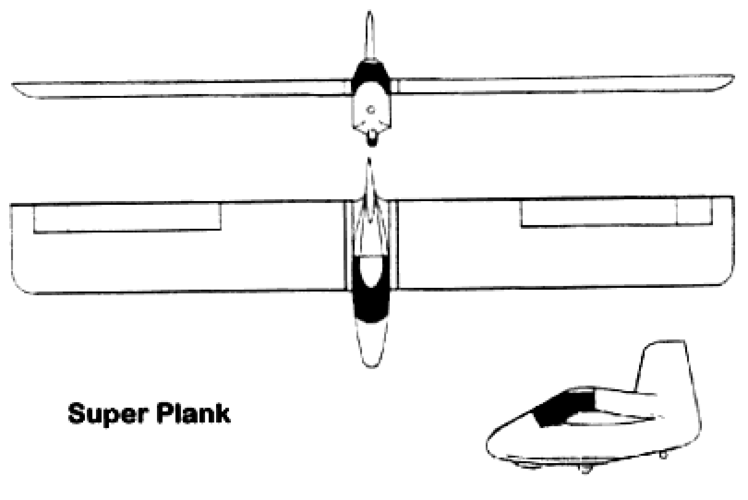
WPB-1 "Powered Plank" ("Flying Plank II") (1975)
Powered version with Kiekhaefer 40hp Aeromarine 440 engine, two-blade pusher propeller [N20WB, c/n 1].
Tubular fuselage, wooden wings, tandem wheel/outrigger undercarriage (later tricycle gear). Mostly built by Van White.
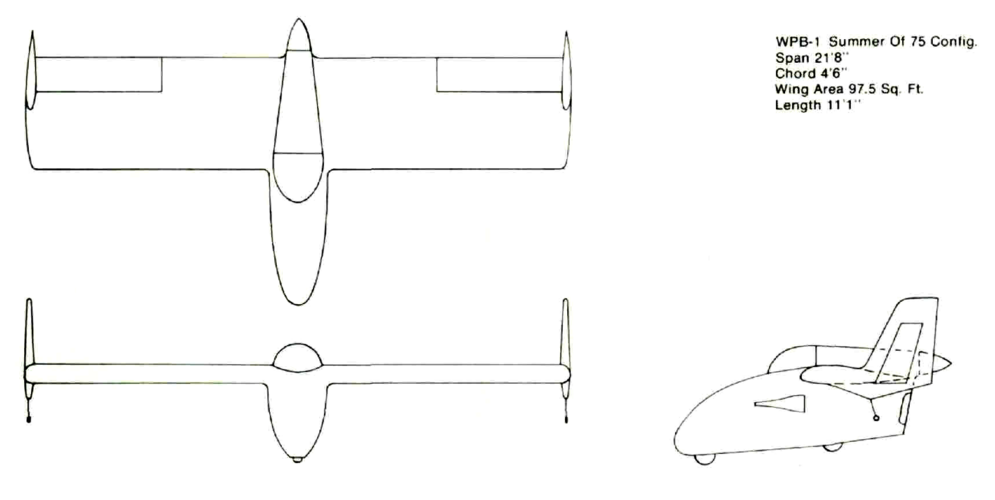
WPB-1 "Powered Plank" (circa 1976)
Planned modifications, not built.

"Bug Bomb 1" (Nov. 1974)
Unbuilt design.
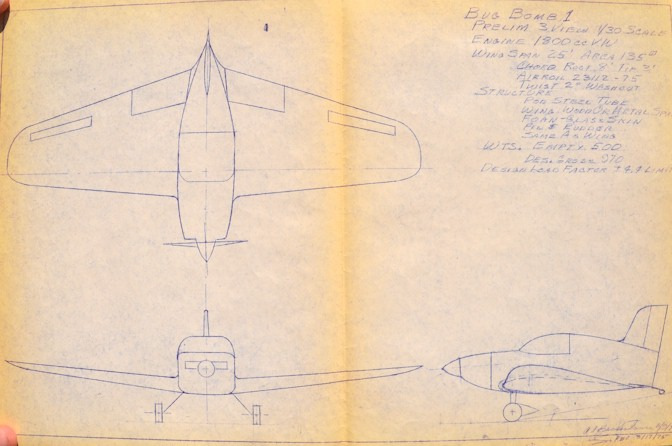
"Smoothie" (Dec. 1974)
Unbuilt design.
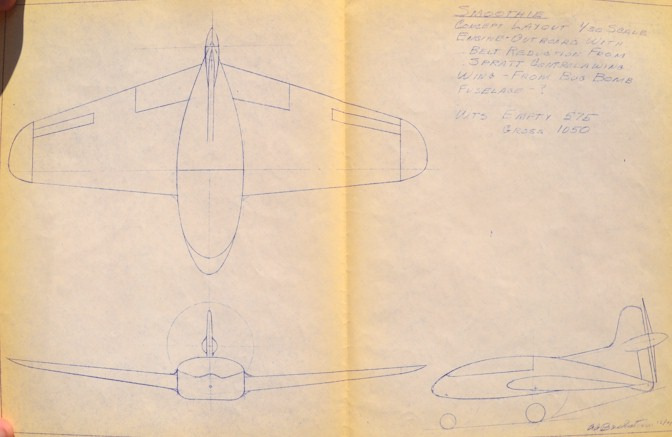
"Seawing" (Dec. 1974)
Unbuilt design.
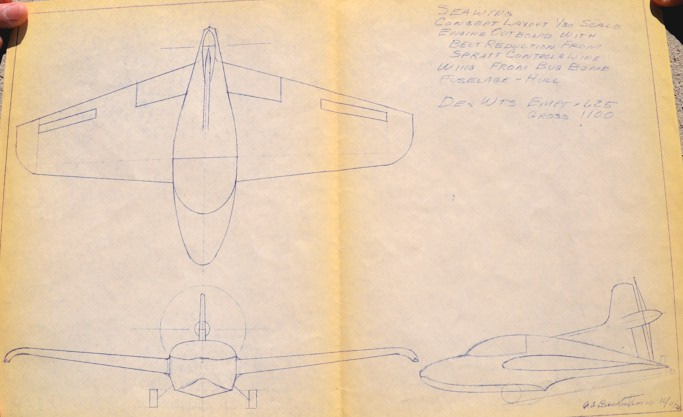
A FEW NOTES:
- Al Backstrom studied gliding under Dr. Raspet's guidance.
- More than 150 sets of plans were sold.
- {N1036C] registered as an Easley-Powell-Blackstrom (sic) type, with certification date in 1961. [N4859S] is also wrongly registered as "Blackstrom".
- A Model SLPS-1 powered sailplane is also listed by AeroKnow.
- Dick Schreder also built an all-metal version of the "Plank" in 1956 but it is not known whether it was ever completed.
- The "Flying Plank" concept was used by Jim Marske when building his prototype XM-1.
- A recent take on the "Flying Plank" design is the Whittaker MW9 "Plank", built in the UK in 2017 [G-CKAA].


